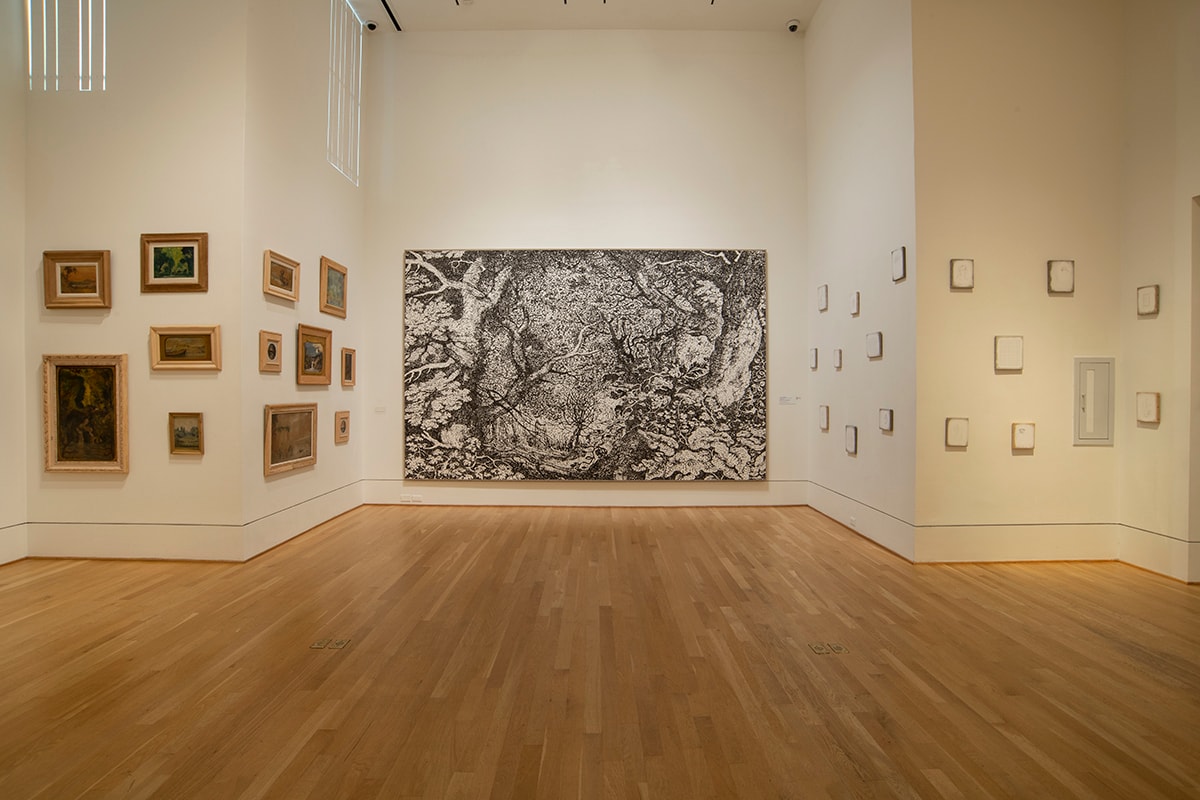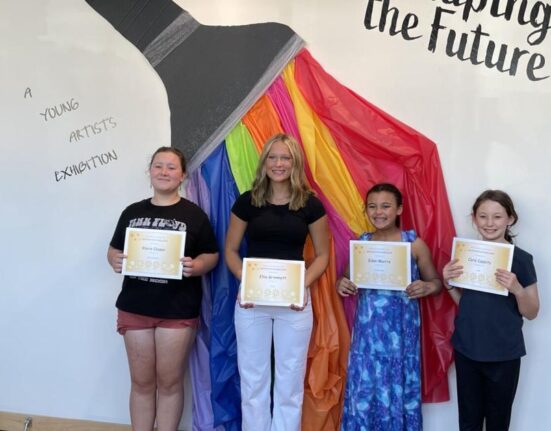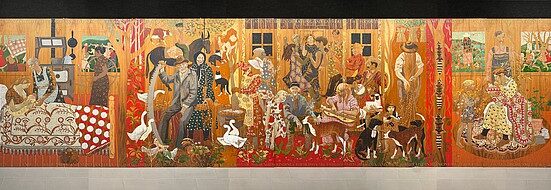The two-room exhibition includes nearly 50 Eilshemius pictures from Rondinone’s collection and fewer than half that many from the Phillips. These are mostly modestly scaled landscapes, many of which have female nudes posed among the greenery. The show also includes a selection of Rondinone’s artworks — at two very different scales — as well as a selection of his handwritten poems.
Rondinone has worked in many media, including sculpture, painting, drawing, photography and video. He’s probably best known for land-art installations and large totemlike pieces, often made of stacked stones that are painted bright colors. This show doesn’t attempt to offer a sense of that breadth.
It gives a more comprehensive sense of Eilshemius’s paintings, if not of the rest of his career. A reportedly grandiose polymath, Eilshemius also wrote music, novels, short stories and poems. Educated partly at boarding schools in Geneva and Dresden, he was a world traveler but spent most of his life in New York and New Jersey. His career as a visual artist was relatively short, lasting only about 30 of his 77 years.
Eilshemius began painting in a conventional mode but shifted during the last decade in which he made pictures regularly. He unlearned his earlier technique, developing an intentionally naive style. It was in this period that the nudes emerged, perhaps to symbolize nature or to invoke the spirit of Greco-Roman culture. (The later pictures seemingly didn’t appeal to Duncan Phillips, since the museum that bears his name doesn’t own many of them.)
Eilshemius abandoned painting in 1921, apparently in frustration at his lack of popular success. He made a few more paintings in the 1930s, and one of those, from 1936, is among those on view from Rondinone’s collection. What may be his last painting is a 1937 depiction of that year’s fiery crash of the Hindenburg zeppelin.
In his time, Eilshemius did have his supporters. One of them, intriguingly, was Marcel Duchamp, the forefather of conceptual art. Almost a century later, Rondinone discovered Eilshemius through a 2001 exhibition at the National Academy of Design in New York City. What he found in Eilshemius’s style was a quality Rondinone called “a magical illumination of the ordinary,” speaking at a reception to mark the opening of the show.
Among Rondinone’s contributions to the show are small “diary paintings” made between 2006 and 2023. The black-and-white sketches were executed on linen canvases partly covered with gesso, making them appear more substantial as objects than the wispy pictures drawn on them. Many of them depict windows, rendered with precisely straight lines quite unlike Eilshemius’s loose brushstrokes.
A two-sided partition holds about 50 of Rondinone’s handwritten short poems. The museum likens them to haiku, which is a stretch, although they are arranged vertically in a way that somewhat recalls the traditional layout of Japanese texts. There are no examples of Eilshemius’s verse, so it’s impossible to judge whether the two men have an affinity as writers.
The most striking works by Rondinone are also black-and-white drawings, but on a much larger scale. Two sylvan scenes on paper (mounted on canvas) cover the walls at each end of the gallery that contains the Eilshemius paintings owned by Rondinone. They’re much bigger than Eilshemius’s pictures, and thus much more immersive.
Since they’re massive and monochromatic, the drawings don’t much resemble Eilshemius’s pictures. But Rondinone does seem to emulate the earlier artist’s compositions, one of which he characterized in a statement: “Its forms are bounded. Its details proliferate. It holds and strains.”
That’s a cogent description of Rondinone’s large drawings as well. Whether the younger artist learned that from his predecessor, or just recognized it as a common interest, the tight compositions are the show’s principal intersection point. While walking very different trails, Eilshemius and Rondinone found the same path into a dense, confined forest.
One-on-One: Ugo Rondinone/Louis Eilshemius
Phillips Collection, 1600 21st St. NW. 202-387-2151. phillipscollection.org.
Admission: $20; $15 for seniors; $12 for military personnel; $10 for students and teachers; free for members and visitors 18 and under. Admission is pay-what-you-wish daily from 4 p.m. to closing. On the third Thursday of the month, the museum stays open until 8 p.m., and admission is free after 4 p.m.







